Multi-dwelling housing, such as apartment complexes and multiplex houses, often comes with a uniform set of built-in furniture and lighting, regardless of the residents’ tastes. Perhaps for this reason, until recently, Koreans tended to show little interest in interior decor and furniture design. The furniture market was largely divided into luxurious imported goods and works by traditional artisans for a small, specialized market, and cheaper plywood furniture for everybody else. In the 2000s, however, personal tastes became more important and demand increased for more individual furniture. Spurring this change was the emergence of young, creative designers. Here are some of the representative works of four furniture designers who have invigorated the market with their original pieces incorporating traditional design elements.
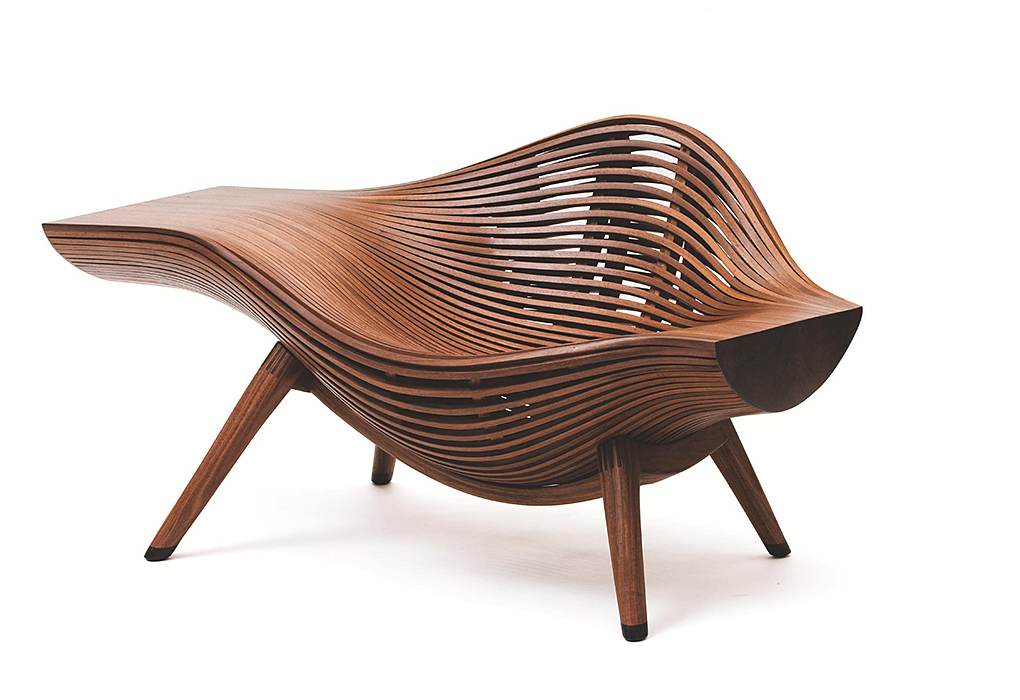
“Steam 11” by Bae Se-hwa. 2010. Walnut.120 × 70 × 71 cm (WDH)Steam bending is a woodworking techniquethat involves heating wood for four to fivehours to make it pliable and then quicklybending and stretching it into the desiredshape, in about 15 seconds, before it coolsdown and hardens again. Bae Se-hwa employsthis Western technique to express Koreanaesthetics. The chair echoes the supple beautyand elegance of the roofline of a traditionalhouse. © Bae Se-hwa
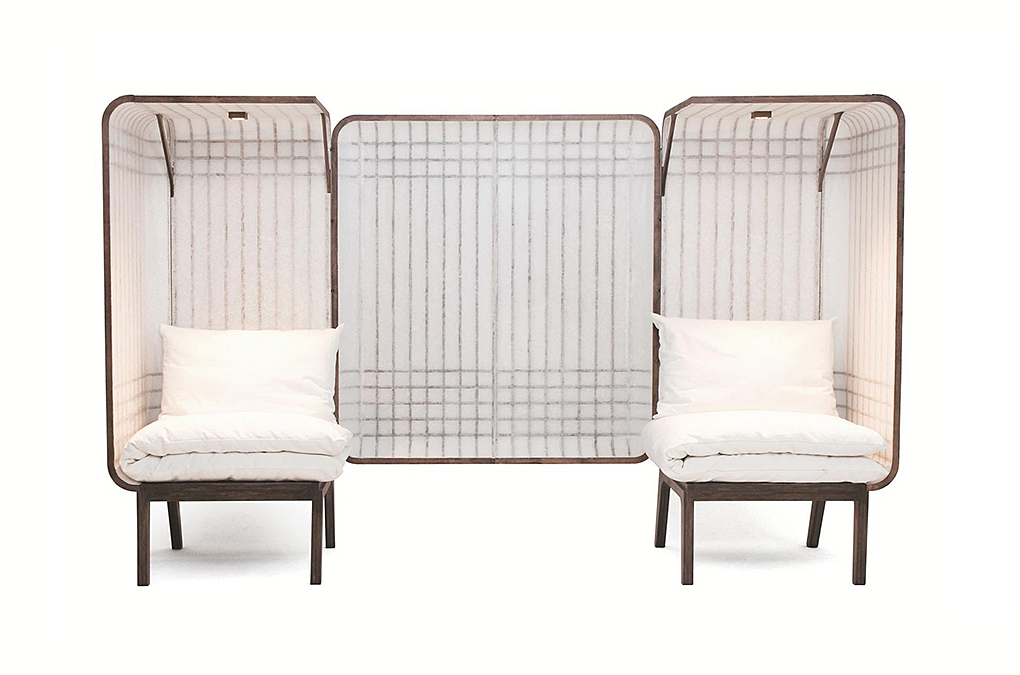
“Sarangbang” by Song Seung-yong. 2011.Birch wood, mulberry paper, compoundmaterial. 279 × 76.2 × 174 cm (WDH).Song Seung-yong is mostly inspired by thestructure and materials of hanok. Applyingthe function of the sarangbang in a traditionalupper-class residence (the room where themaster of the house slept, read and receivedguests), the designer d this simple butgraceful space. The latticed wooden framecovered with mulberry paper s a cozyambience in this foldable piece of furniture. © Song Seung-yong
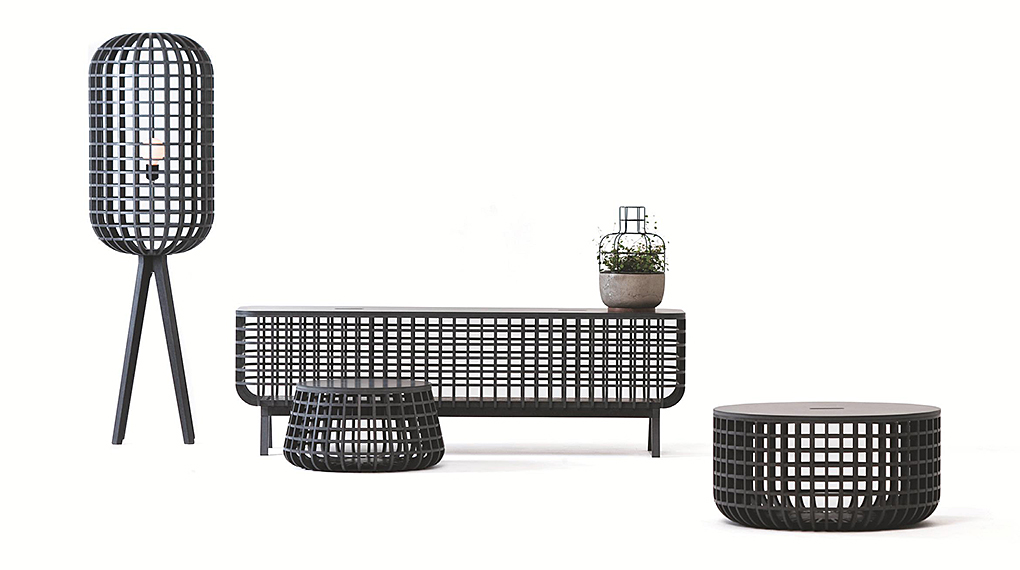
“Dami” by Song Seung-yong. 2012.Valchromat. Lamp: 40 × 40 × 127 cm;Rectangular table: 140 × 38 × 45 cm; Big roundtable: 60 × 60 × 30 cm; Small round table:48.5 × 48.5 × 25.2 cm (WDH).Composed of lines rather than planes, thepieces in the Dami series are light. This set oftables and a lamp features neatly intersectinglines that are reminiscent of the latticedwindows of a traditional Korean house; thereis a unique aura to the simple, austere forms. © Song Seung-yong
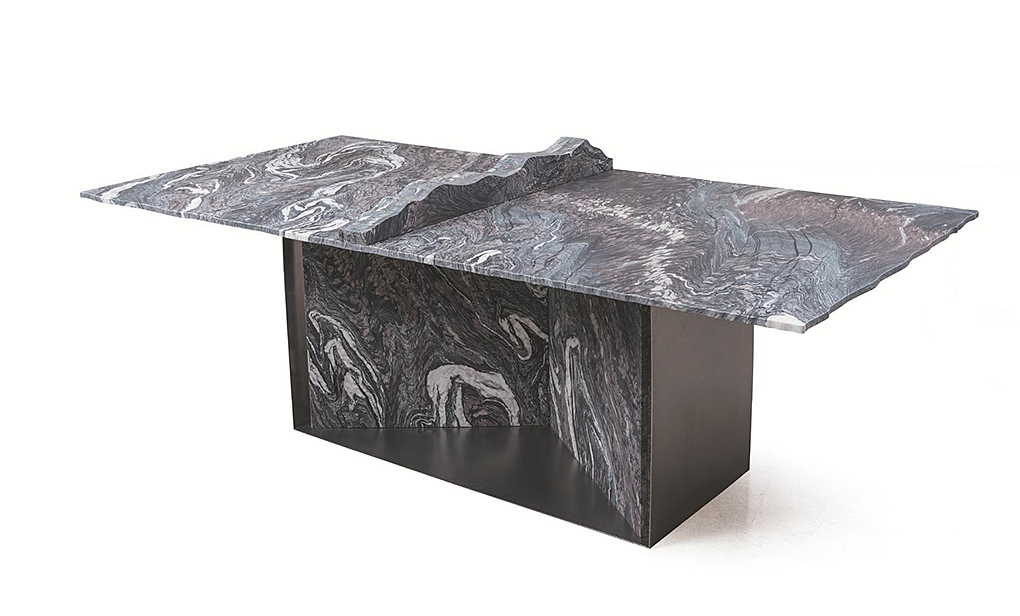
“Playful Wave” by Kim Jin-sik. 2017. Marble,stainless steel. 220 × 105 × 74 cm (WDH).Kim Jin-sik explores the physical propertiesof his materials. This table came from animagined ping pong game above the billowingsea. The designer attempted to describe thesurging waves across the tabletop and baseusing the patterns and texture of marble. The“net” was inserted into a metal frame via amethod similar to the joinery technique oftraditional Korean wooden architecture. © Kim Jin-sik
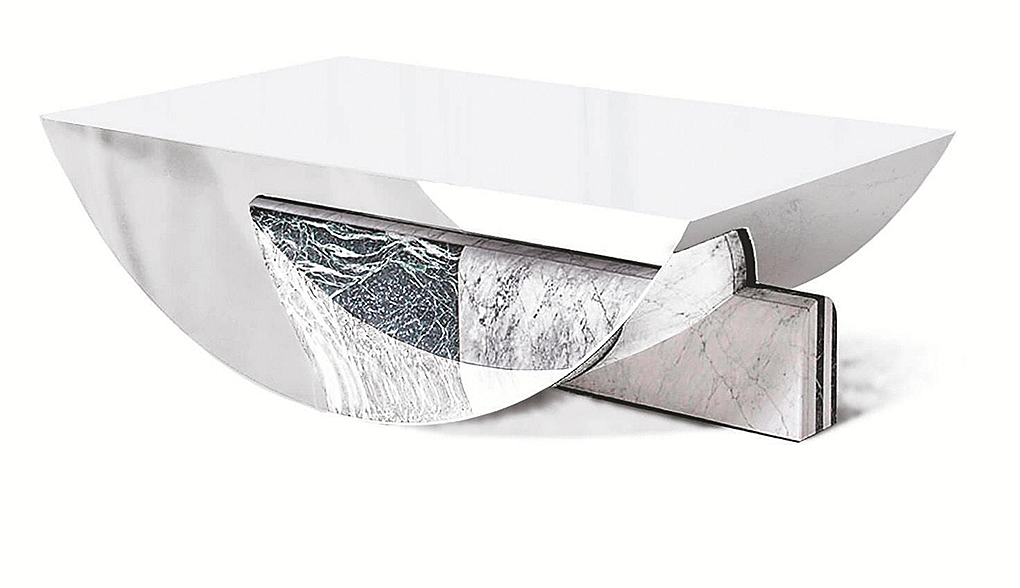
“HalfHalf Low 120” by Kim Jin-sik. 2016. Marble,mirror stainless steel. 120 × 70 × 38 cm (WDH).The strong patterns and colors of the marble base arereflected on the curved surface of the semicircularstainless steel plate, creating a novel visual texture.This table is part of a series of furniture that embodiesthe formal combination of circles and rectangles andthe textual contrast of stone and metal. The designer’srigorous craftsmanship has produced a work with a highdegree of perfection, devoid of the flaws often found inworks of simple forms and proportions. © Kim Jin-sik
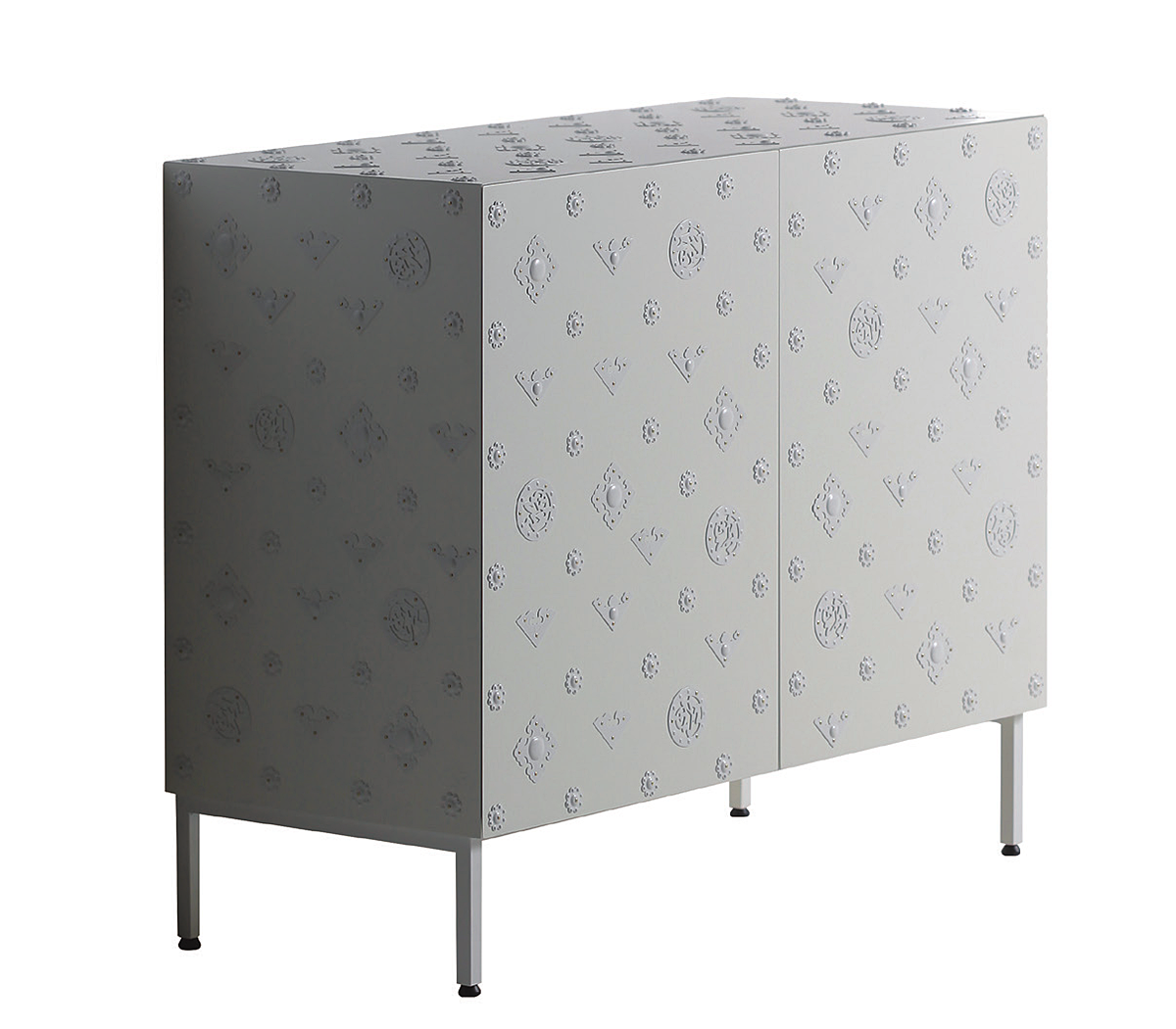
“Dazzi” by Ha Ji-hoon. 2012. Plywood,powder-coated steel. 100 × 45 × 85 cm (WDH).This cabinet is one of Ha Ji-hoon’s series offurniture pieces that adopt the various designsof metal fittings (jangseok) used on traditionalwooden chests (bandaji). The designer’s artistryand commitment to the reinterpretation oftradition has resulted in a work of timelessbeauty combining classical grace and modernsimplicity. © Ha Ji-hoon
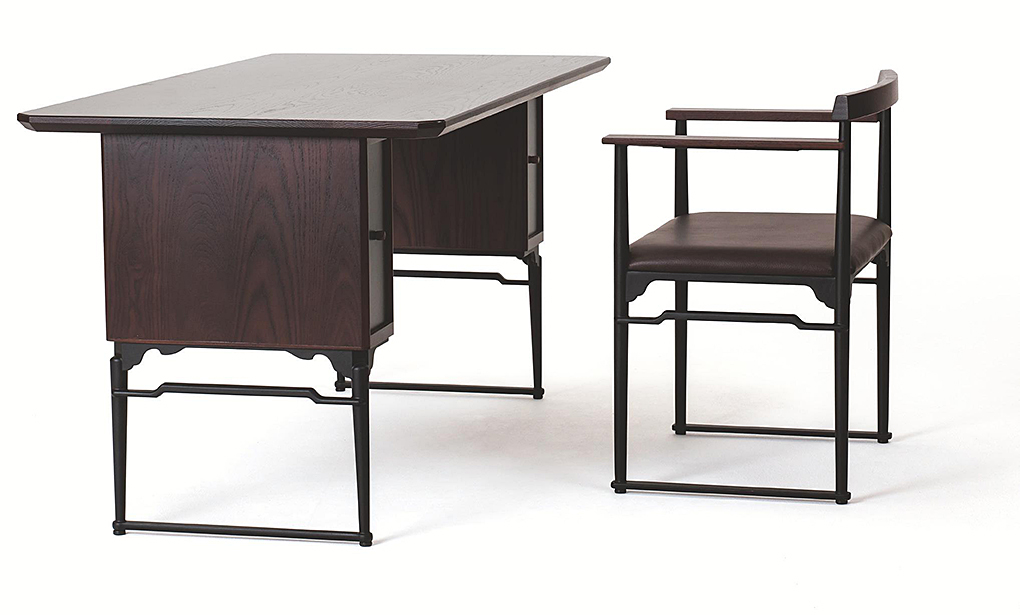
“Pittsburgh” by Ha Ji-hoon. 2015. Oak wood,aluminum. Desk: 150 × 75 × 72 cm; Chair: 47 × 38 × 72 cm(WDH).The structural elegance of traditional portable tablesfrom Naju, called naju soban, originally used on thefloor, is reflected in this table and chair set. Produced incollaboration with a master artisan in crafting the Najutype tables, it was commissioned for the opening of theKorean Heritage Room in the Cathedral of Learning atthe University of Pittsburgh in the United States. © Ha Ji-hoon